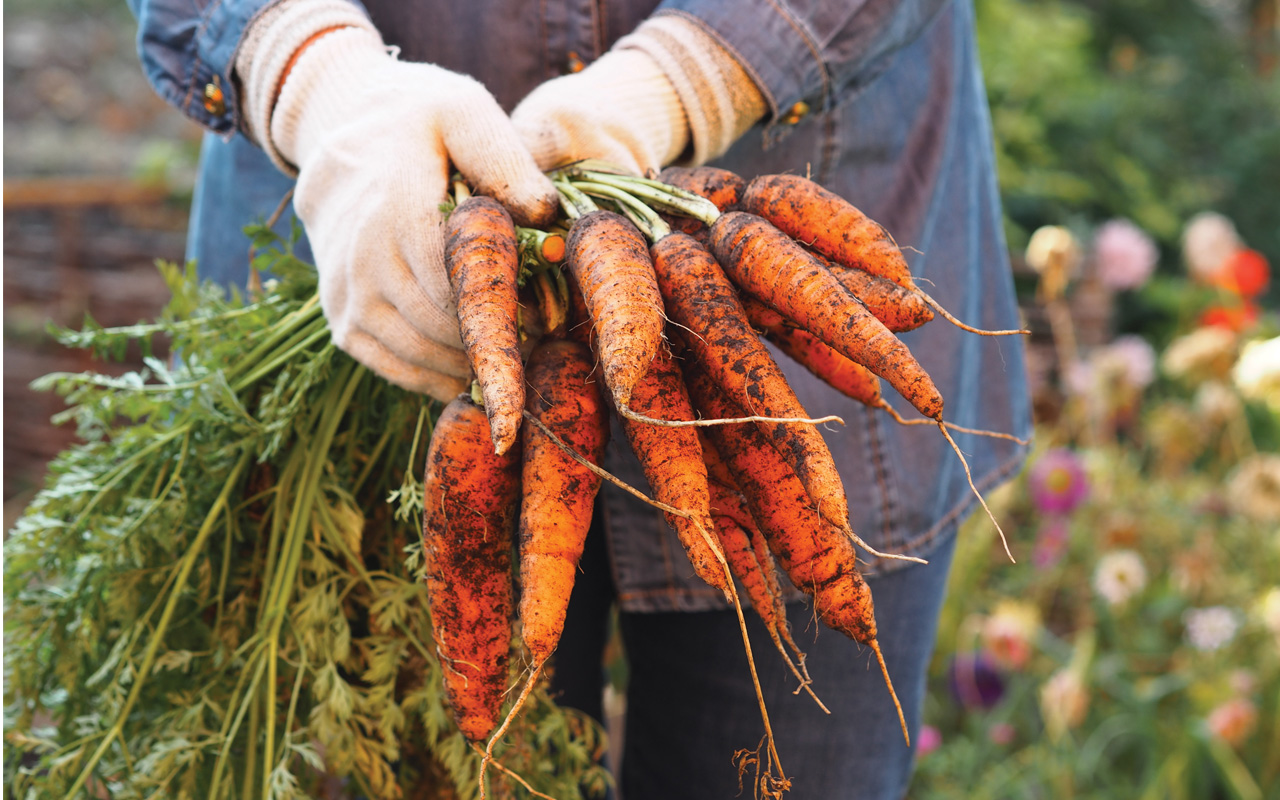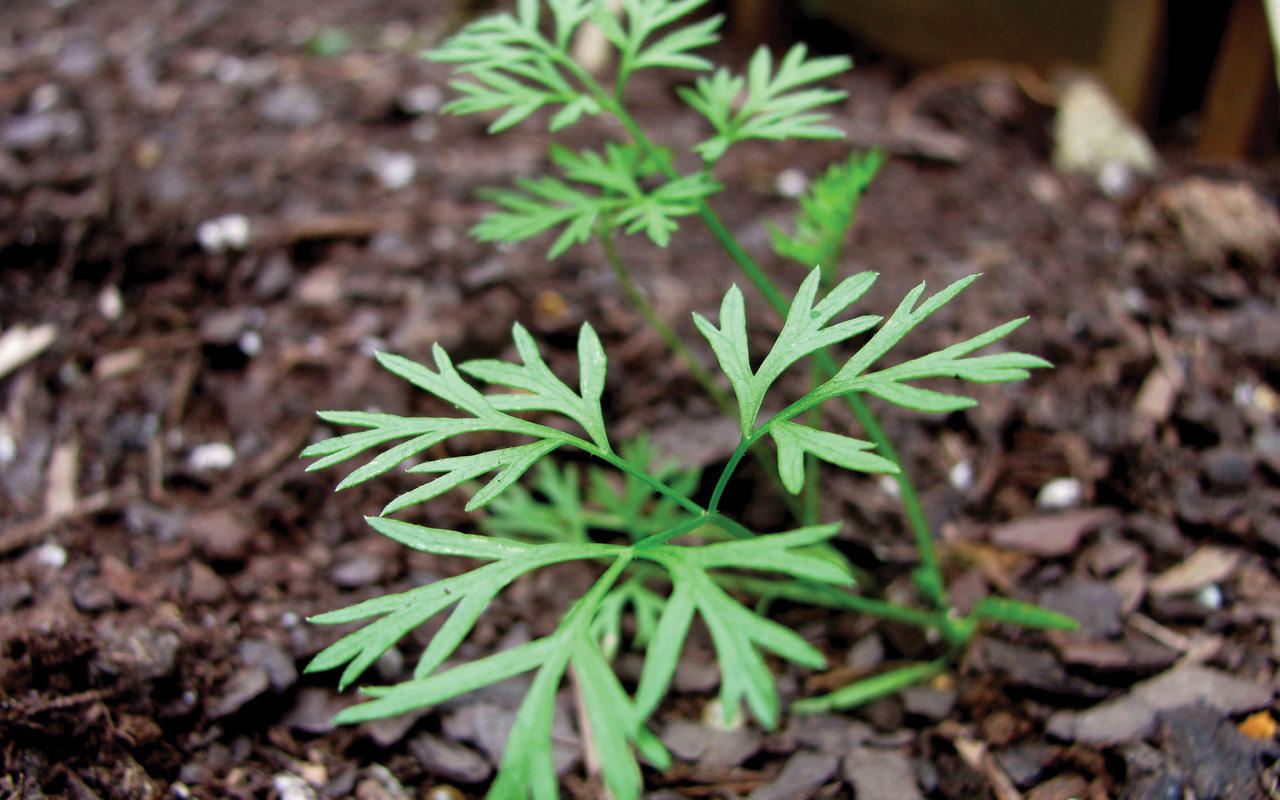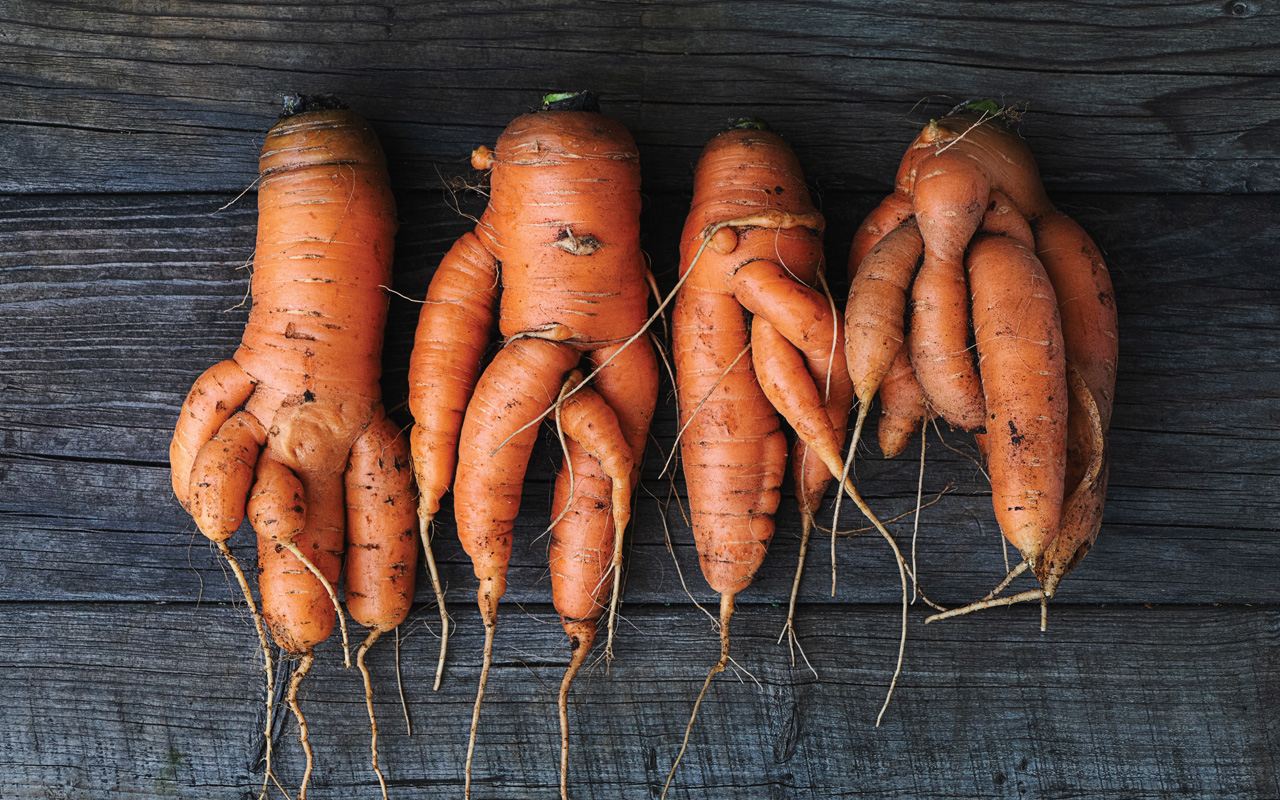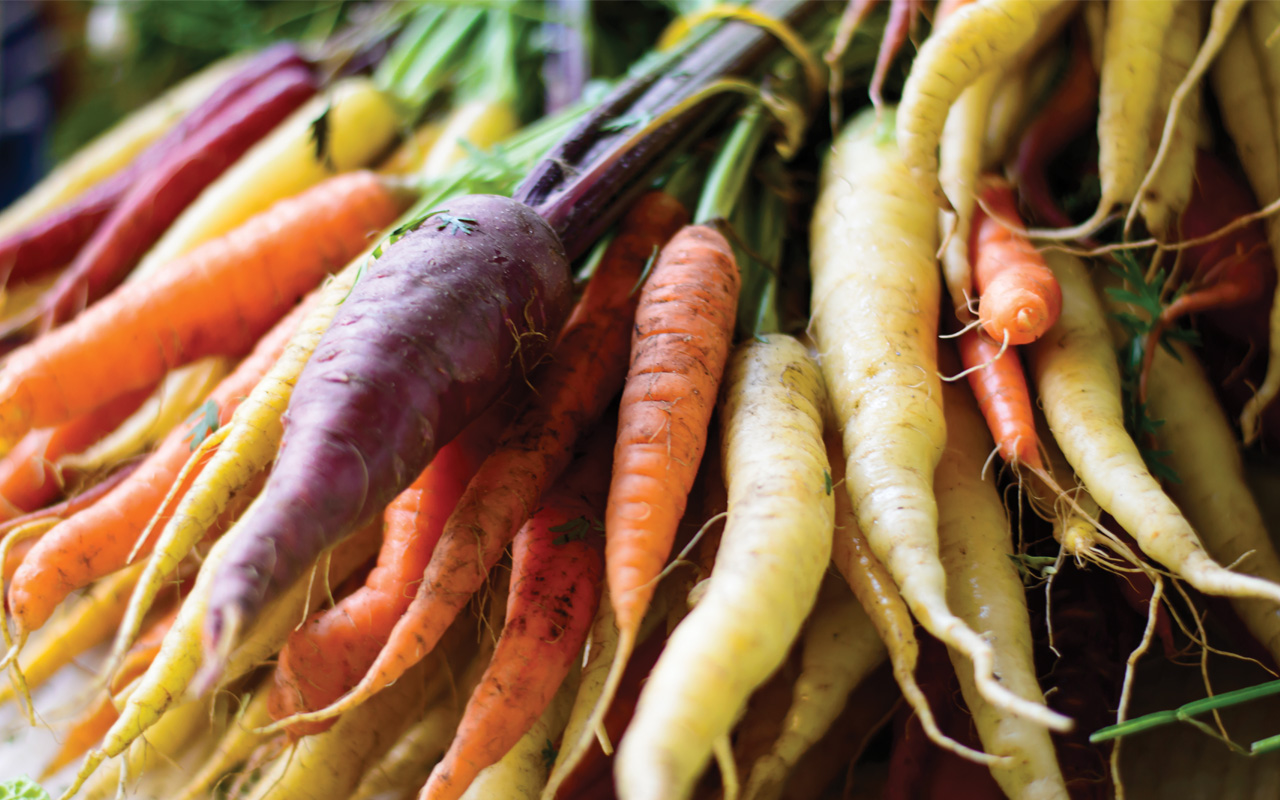
One of the most consumed and desired veggies for centuries, is the carrot! All ages like a crunchy, sweet, nutritious, carrot – a good source of beta carotene, fiber, vitamin K1, potassium, and antioxidants. This slow, but easy-to-grow root vegetable, has been linked to lowering cholesterol levels and improved eye health. If you haven’t already sowed carrot seeds in your garden, as Bugs Bunny would say, “What’s up Doc?” – the time is now!
Include your family. Your kiddos will get a kick out of unearthing a fresh carrot from the garden; rinsing it off; and devouring it right smack dab in the middle of your veggie patch. No need to peel it… much of a carrot’s nutrition is found in the skin or just under it!
SIX ELEMENTS OF THE CARROT ROOT:
1. Root cap
The cone-shaped covering of the growing tip of the root, protects against scratches while moving through the soil. It excretes a mucus like substance called mucigel, which allows the root to move through the soil easily.
2. Epidermis
The hard outer layer on a root which absorbs water and ions from the soil.
3. Root hairs
These are small, microscopic hairs on the outside of the epidermis which increases the surface area of the root, facilitating more absorption of water and minerals. These roots survive for only a few days.
4. The Cortex
Is located below the epidermis. The cortex makes up the bulk of the primary root. Sugar and carotene is contained in the cortex.
5. Endodermis
This is the thin layer of cells in the center of the cortex which prevents water and any solutes dissolved in the water, from passing through this layer via the apoplast pathway.
6. Central Core
This is made up of xylem, which transports water and minerals from the soil, to the root and on to the leaves.
MAIN TYPES OF CARROTS:
There are many varieties and variations within these types of carrots.
Imperator – Most common grown. (8 – 10”) long tapered, slender roots, small core, deep orange color with smooth skins.
Danvers – Wider at the top than the Imperator. Strong flavor. Root medium length is (6 – 7”). 2 – 2 ½” in diameter, pointed or somewhat blunt root tip.
Nantes – Medium in length (6 – 7”), 1-2” in diameter, cylindrical, slight shoulders with an abrupt, blunt taper. Known for excellent color, quality and sweet flavor.
Chantenay – Up to 5 inches wide at the top, then tapers. Excellent yield. When raw, root texture is coarse. Roots are short to medium size (4 1/2 – 5 1/2”), large diameter crown (2 – 2 1/2”) and a cone shape that tapers quickly. Lighter in color.

Harvesting carrots
Ball or mini – Varieties that are shaped like radishes or miniature. Great for containers because of their short taproot space requirements. They reach about 3 to 4 inches long and can be served whole with the tops attached.
ROOT SHAPE AND SIZE
The shape and size of carrot roots are influenced by soil type, temperature & spacing.
• Roots will grow longer and slender at optimum growing temperatures from 55 to 68 Fahrenheit.
• High temperatures can cause rough root surface.
• Temperatures above 68°F will cause shorter, thicker roots with a stronger flavor with less sugar.
• Plant spacing and density influences root size within the crop. The tap root’s early development designates the length and shape of the root at maturity.
• Till soil well and add plenty of compost prior to planting to promote vigorous growth and straight roots.
MISSHAPENED CARROTS
• Branching – Poor soil condition will cause forked or twisted roots. Stones, sticks, and other solid objects force the root to grow around them, resulting in deformed shapes.
• Excessive use of high-nitrogen fertilizer, especially if applied shortly before the carrot seed was sown, may cause similar symptoms.
• Carrots may also become stunted or deformed when they are planted too closely together. Consult the seed packet and provide adequate space for the vegetable’s development.
• Misshapen carrots are usually edible, although the core may become woody and slightly bitter.
WHY CARROTS MAKE SUGAR
Carrots make natural sugar to make energy for the plant to reproduce. A carrot is biennial. Near the end of the first year’s growth, the taproot expands into the carrot shape we all know. Extra glucose is stored in the carrot’s root as a food source for the plant’s second year’s growth. This is the time to harvest when its sugar content is at its highest. When the root is left in the ground for a second year it produces a long stalk with a mass of flowers and then seeds.
GROWING CARROTS
Soil Requirements
Carrot’s ideal soil is loamy with good drainage. Avoid clay heavy soil.
A combination of compost, sand, and silt, creates a rich texture that drains well.
No need to feed; simply top beds off with compost and remove rocks & clumps.
Plant in full sun.

Enjoying fresh carrots from your garden
Your kiddos will get a kick out of unearthing a fresh carrot from the garden; rinsing it off; and devouring it right smack dab in the middle of your veggie patch.
PLANTING YOUR CARROTS
• Prepare plot and water thoroughly before sowing seeds.
• Spread carrot seeds evenly over the entire area.
• Sprinkle a good organic, light soil mix covering the seeds ¼” thick. Lightly compact the soil.
• Water gently mist seeds and avoid washing your seeds away. Keep the top layer moist for germination which can take 1 to 3 weeks.
WATERING
Keep the top layer of soil moist daily. Once plants have germinated, water deeper and less frequency.
THINNING & GROWING
Carrots can take 2-4 months to harvest. Make ample room for carrots to mature properly. Thin by pulling seedlings and baby carrots, making room for others to mature. Add them to your salads. Delish!
HARVESTING & STORING
Pull them from the soil when the roots tops are to the variety’s anticipated diameter. To harvest carrots, simply grab them by their greens at the base and pull up. Wash your carrots, remove the tops. Seal and place wet carrots in a container or Ziploc in your crisper drawer. They should stay crisp for weeks.
GOOD TO KNOW:
• Baby carrots from grocery stores are not true baby carrots. They are pieces of regular adult carrots cut into two-inch fragments by a machine. Shredded leftovers usually end up in cattle feed.
• Carrots have a bitter flavor grown in temperatures that reach 80 degrees F or greater.
• Hairy carrots happen due to an excess of nutrients or due to water stress.
• Orange carrots get their color from the presence of beta carotene; purple varieties from the presence of anthocyanin, red from lycopene and yellow from lutein.
Easy to grow and delicious to eat, everyone loves a carrot! Add it to a salad, or to sweeten your green juice. Puree them, roast them or just enjoy them raw and whole. They come in a myriad of colors, full of nutrients with an extended shelf life. Kids love them and so do you!
…Now let’s get to the root of why you need to add this one to your home organic garden. Because, why the heck not?
Kelly Emberg, the model gardener
For more gardening tips, follow me on Facebook, Instagram, YouTube & Twitter.
www.kellyemberg.com












